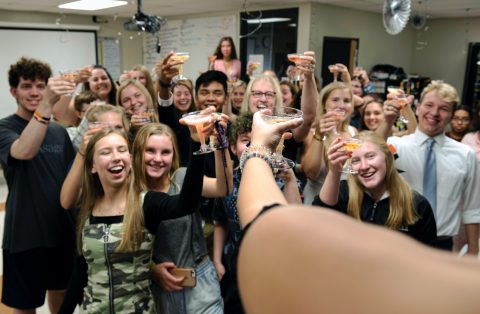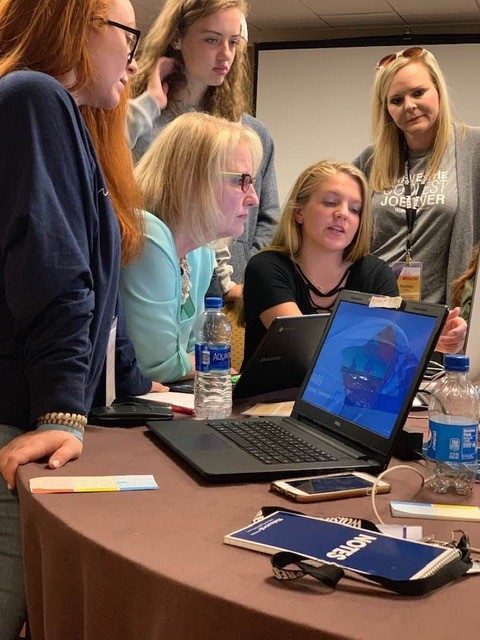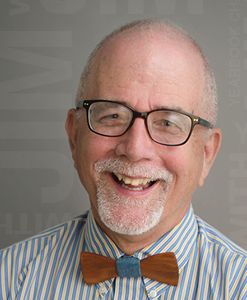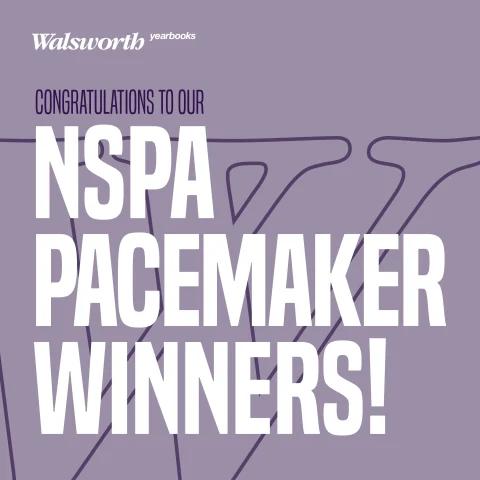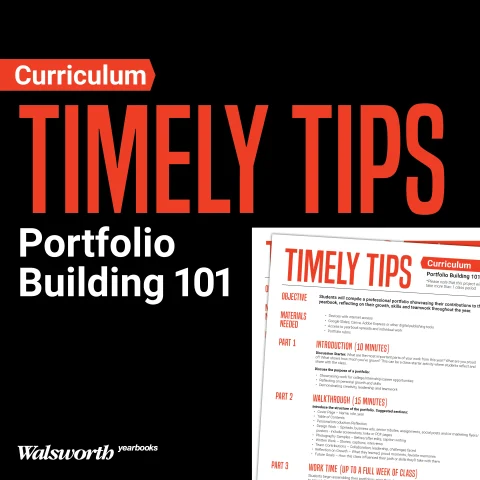As the summer rolls along, our August 2020 Adviser of Note is Susan Massy, the award-winning yearbook and newspaper adviser from Shawnee Mission Northwest High School in Shawnee, Kansas. Let’s get to know her a little better!
Profile
Susan Massy
Shawnee Mission Northwest High School, Shawnee, Kansas
High school attended: Abilene High School; Abilene, Kansas
College attended: Kansas State University; Manhattan, Kansas
Did you participate in journalism in high school? No. I was a music geek and played in the marching band and a regional orchestra as well as directed the pep band.
Did you participate in journalism in college? I worked on the Collegian (newspaper) as a reporter for a semester and on the rim for a semester. I never wanted to do yearbook. I didn’t think it was real journalism.
What were you doing before you became a teacher and a yearbook adviser? Attending college. I was the adviser of a 72-page yearbook during my first two years of teaching and swore I would never do it (or coach debate or forensics or direct plays or teach speech… I mean Interpersonal Communications) ever again in my life.
Size of your book: 9
Number of pages in your book in 2020: 400
Number of pages in your book in 2021: The plan is to stay with 400.
Student Population: 1,633
Number sold in 2020: 1,040
Awards for the 2019 book: CSPA Gold Crown; NSPA Pacemaker
Number of books you have advised at Shawnee Mission Northwest including the 2021? 35 at Northwest
Other schools you have taught and/or advised at: Pleasant Ridge High School, Easton, Kansas (east of Leavenworth and west of Weston, Missouri)
Other classes you teach at Northwest: Editorial Leadership, 21st Century Journalism, Newspaper Production, Yearbook Production, Digital Photo Media (photojournalism), Study Skills
What other activities are you involved in and outside of your role as teacher and adviser?
Wife, mother, grandmother, daughter, sister, aunt, niece
Q&A
How and why did you decide to go into teaching? advising?
My college adviser, Mary Francis White, told me that I needed to find something to make myself more marketable as a teacher. It was an overcrowded field in the late ‘70s. English teachers were a dime a dozen. She gave me a choice of several classes. I’ve always liked to write and was told I did it well, so I chose Reporting 1. I only needed to take three classes, but I ended up deciding I would just get BA in English and in Journalism, but I was two hours short when it was time to graduate and I just couldn’t make myself get those two additional hours. I left college with a BA in English, my teaching certificate and just short of a degree in journalism.
How and why did you first get involved with scholastic journalism?
I was the adviser of the yearbook and the newspaper at the tiny high school where I got my first teaching position. The yearbook had 72 pages (which I never thought we would fill) and the newspaper was printed every two weeks on a mimeograph machine. You’ve never lived until you’ve set type in columns on a typewriter.
What was the most difficult part of your first year advising?
There were so many difficult things. 1) I advised the yearbook and newspaper, coached debate and forensics, directed two plays during the course of the year and taught three sections of freshman English plus a speech class. 2) My rep (not Walsworth) was only interested in talking with my principal. I think I saw her three times during the two years I was there. If I saw her today, I would kick her in the shins. Now that I have a terrific rep, I realize that she didn’t do her job. But I didn’t know that at the time. I just felt lost.
What made you want to come back for year two?
My parents told me that I could do anything if I just worked hard enough. I wasn’t about to give up.
What advice would you give to a first-year adviser?
If you are lucky, you will have a staff that knows how to produce a yearbook. I knew nothing about yearbook but lots about newspaper. I let me staff teach me what they knew, and I taught them things that applied from my knowledge of newspaper. I knew a tiny bit about design, lots about editing and improving writing, and I had a good base of knowledge regarding photography. Looking back, the book was appalling, but at the time we were all very proud of it.
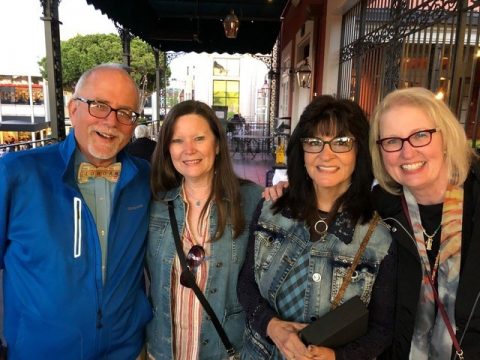 What were some of the factors that led to your success as an adviser?
What were some of the factors that led to your success as an adviser?
I was blessed with mentors from the very beginning. At the first yearbook workshop I attended, Bruce Watterson was my instructor. I learned so much from him just before my second year as an adviser. When I got to the Shawnee Mission School District, Nancy Hall took me under her wing and got me to JEA conventions and KSPA contests and really mentored me. Through her, I met Dave Adams who was the first person to hire me to teach a workshop, through the workshop I met John Hudnall and Cheryl Attebury. Through our local organization, I met Ron and Molly Clemmons. Through the conventions and local workshops, I met H.L. Hall who became my journalism dad. Ron, Molly, Dave, and H.L. all encouraged me to run for the JEA Board when I was still a very young adviser. At those meetings, I mostly sat and listened, nodding whenever I wanted people to think I understood what was going on. At a JEA convention, I met Dave Massy who later remembered my name when there was a last-minute opening at the Ball State Workshop. The staff at that workshop included Casey Nichols, Kathy Craghead, Nancy Hastings, Mark Shoup, Jan Watt, Bradley Wilson (when he was even less experienced than I was) and a host of other talented teachers who became my inspiration and a significant chunk of my journalism family. By the way, David, the guy who remembered my name, is now my husband. And Sister Rita Jean blessed our daughter at her first JEA convention when she was less than a year old. And, of course, I met you, Jim, while we were stuck on the tarmac waiting to take off after a JEA convention in the mid-‘80s and later I met Crystal Kazmierski at a JEA adviser reception at a convention. We three became such close friends and really drove each other, both collaboratively and competitively, to become good advisers. That same spirit drives us as advisers and colleagues in Shawnee Mission. With five pretty darn awesome books in one district which means five pretty darn awesome advisers, you know we are helping and advising each other, sending spreads and covers and controversial stories to each other for comments, critiques and support and we are just there for each other in the good times and in the bad ones.. I suppose that’s the number one thing we give each other: support. We remind each other of deadlines (well, I don’t remind anybody of deadlines, but they remind me), we PLC together and we share resources with each other. I don’t think there are five advisers in the same school district anywhere else who are as close as we are.
I think the only thing I’ve left out is the most important thing: my students. Truly, their talent, their willingness to learn and to stretch and to put up with my critiques (which are sometimes more brutal than they need to be) has allowed me to be seen as a highly successful adviser. Honestly, I am just privileged to get to work with them. They really are the best and hardest working students in the building.
What has been your biggest challenge as an adviser?
- Meeting deadlines/Figuring out the balance between deadlines and waiting for creativity to have a chance.
- Keeping my hands off of the keyboard.
It’s hard to say which has been the greatest challenge.
Finishing the book under Coronavirus quarantine
What was your biggest challenge in completing your 2020 book?
Keeping our spirits up as the process dragged on and on and on. It was really hard to let go of the book. To declare that these pages were done when we had envisioned some of them being so much more complete, more well-written, better photography. So many things that we had planned to repair on proof couldn’t be repaired because we weren’t able to photograph people, we struggled to get people to respond. We just struggled.
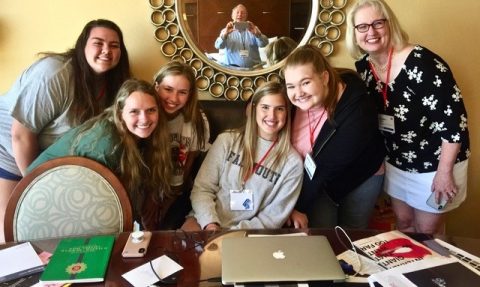 What positives came out of the process of finishing the book?
What positives came out of the process of finishing the book?
I really learned who my leaders needed to be for the following year. I saw who was available whenever I put out a “help me” cry. It didn’t take much for those who were really dedicated to separate themselves from those who just didn’t have that same level of commitment. Six of our staff of 29 plus two photography editors made sure that the book got done. Stuck with it long after the final deadline had passed. They were amazing.
Starting the 2021 book
What is your 20-21 school schedule looking like? Are you coming back online or in person or a hybrid?
We have no idea at this point. Plan A, plan B and plan C as well as the gating criteria have been released, but no decision has been made and currently COVID rates are increasing while testing is decreasing and delayed.
How are you and your staff preparing to start the year?
We attended workshops this summer including the Walsworth National workshop to get started. The editorial team has their theme pretty well in hand, but we are still working to get opening copy formed. Of course, we can’t write it for real until closer to Winter Break. We are doing extended summer coverage and we’re talking about the “what ifs”… what if there are no fall sports? What if the first day of school is online? What if we can’t get school pictures/senior pictures taken because we are not in the building? We have answers for some of these what ifs and some of them are just scary.
What are your biggest concerns and how are you solving them?
Right now, our biggest concern is coming up with a ladder. We got about 20 pages in and then just kinda looked at each other. The book is going to have to be roughly chronological so that we can roll with whatever happens. In the meantime, we are looking at doing more personal coverage, more first-person stories. We have decided that the past form of the yearbook may or may not be possible or desirable this year. We are giving ourselves freedom to create and recreate as well as grace to handle things as they come.
Tell a story that is indicative of your life as an adviser.
I was at a convention when I got a call from a parent who wanted me to find her daughter immediately before she could find out (find out about what… I didn’t initially know) from social media. The girl’s first cousin had been shot and killed in Florida when a gunman entered a gym and began shooting. The two girls were very close. I found Erin in a session and texted her. She came out, eyes wide. I handed her my phone and stood behind her as her mom delivered the news. I remembered reading Jim Sheeler’s Pulitzer-prize winning series of articles “The Final Salute” about a Marine officer who delivers the news of the deaths of servicemen to their families. He said that after he tells the person who answers the door, they always fall… they fall either emotionally or spiritually or physically, and you have to be there to catch them. I knew in that moment my student would fall and I needed to be there to catch her. I knew that she would fall both physically and emotionally. I was ready.
Yes, my job is to teach students to write and edit and design. To find the moment and capture it. I teach them to freeze moments in words and in images. But my calling is to be there when they need me, to catch them. I have driven suicidal teens through the streets of our city in the middle of the night. When you sit side-by-side in a dark car headed for nowhere-in-particular, people can talk and talk and talk. They can cry. They can let the pain out. We drive until they are ready to return home. I walk them in and wait while they wake up their parents. I stay until they finish telling the story.
I have sat on the floor and hugged the student who has just asked me if I’d ever had a pregnant photo editor before. Eight months later, the baby attends every work night. Staff members watch her so the editor can work. She is the best method of birth control that ever existed for those students.
I’ve held students and cried with them in the hospital immediately after the death of a parent… some of those students hadn’t been in my classroom for a decade. I did it twice in six months. One yearbook staff member lost both of her parents.
I’ve visited students in psych wards, talked without touching, as is required and is so difficult for me.
At a JEA convention, I sat with a student in the emergency room after she had taken more than 50 Tylenol. I cried with her mother as I told her she needed to come right away that I would stay until she arrived. I hugged the mom and held her when she got to the hospital.
That’s my calling. That’s my life as someone students will let into their lives and into their confidence. But there is a flip side to this. I have been allowed to celebrate and laugh and joke and tease my yerds as only someone who knows them well can do. We have danced to the top 8 at 8, gone outside to scream in frustration when the index crashed again, shared our highs and lows over dinner, and giggled for no reason at all at the end of a long work night. Being an adviser is such a privilege… except when it’s not. I hate deadlines.
Tell a story about a moment in your career as adviser that you will never forget.
Kansas City… my first convention. All but two of the 20 students got into trouble. It’s good to have something like that happen when you are just getting started. I learned so much and I think I’m a better trip coordinator and convention mom than I would have been otherwise. At conventions now, my students have very little free time. I want them to come home from wherever with knowledge of where they have been, what makes it unique, and what’s the “must try“ dish from the area. If the only part of the convention city they can describe is the inside of the hotel or the convention center, I have failed.
Another story:
I love that sound … the quick intake of air as a student realizes that their name has just been called as an award winner. That moment when they realize that someone else sees something special in their work. They jump up from their seat and dance, prance, run or gallop to the front. And when they return, there’s that smile. The new-found confidence of a winner. It’s not just a smile, it’s a grin. It’s a celebration. I snap their pictures. They know I’m going to do that, and they’ve already got their pose decided. And then they want a hug and congratulations from me and from everyone else from Northwest.
That’s right up there with getting to tell a yearbook student that the story she has slaved over for the past eight weeks is ready to be published. There’s a light that comes on in her face. Sure, it’s relief, but it’s also that sense of accomplishment. Of having lived through all of the suggestions and critiques and compliments followed by “but” to get to this place. “Do one final spell check and you are good to go.” Sweet sweet success.
This photo is the toast after our wedding ceremony. I love this picture. Look how happy they all are.
